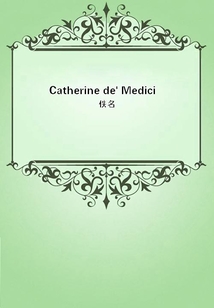最新章節
- 第124章 TWO DREAMS(6)
- 第123章 TWO DREAMS(5)
- 第122章 TWO DREAMS(4)
- 第121章 TWO DREAMS(3)
- 第120章 TWO DREAMS(2)
- 第119章 TWO DREAMS(1)
第1章 DEDICATION
To Monsieur le Marquis de Pastoret, Member of the Academie des Beaux-Arts.
When we think of the enormous number of volumes that have been published on the question as to where Hannibal crossed the Alps, without our being able to decide to-day whether it was (according to Whittaker and Rivaz) by Lyon, Geneva, the Great Saint-Bernard, and the valley of Aosta; or (according to Letronne, Follard, Saint-Simon and Fortia d'Urbano) by the Isere, Grenoble, Saint-Bonnet, Monte Genevra, Fenestrella, and the Susa passage; or (according to Larauza) by the Mont Cenis and the Susa; or (according to Strabo, Polybius and Lucanus) by the Rhone, Vienne, Yenne, and the Dent du Chat; or (according to some intelligent minds) by Genoa, La Bochetta, and La Scrivia,--an opinion which Ishare and which Napoleon adopted,--not to speak of the verjuice with which the Alpine rocks have been bespattered by other learned men,--is it surprising, Monsieur le marquis, to see modern history so bemuddled that many important points are still obscure, and the most odious calumnies still rest on names that ought to be respected?
And let me remark, in passing, that Hannibal's crossing has been made almost problematical by these very elucidations. For instance, Pere Menestrier thinks that the Scoras mentioned by Polybius is the Saona; Letronne, Larauza and Schweighauser think it is the Isere; Cochard, a learned Lyonnais, calls it the Drome, and for all who have eyes to see there are between Scoras and Scrivia great geographical and linguistical resemblances,--to say nothing of the probability, amounting almost to certainty, that the Carthaginian fleet was moored in the Gulf of Spezzia or the roadstead of Genoa. I could understand these patient researches if there were any doubt as to the battle of Canna; but inasmuch as the results of that great battle are known, why blacken paper with all these suppositions (which are, as it were, the arabesques of hypothesis) while the history most important to the present day, that of the Reformation, is full of such obscurities that we are ignorant of the real name of the man who navigated a vessel by steam to Barcelona at the period when Luther and Calvin were inaugurating the insurrection of thought.[*]
You and I hold, I think, the same opinion, after having made, each in his own way, close researches as to the grand and splendid figure of Catherine de' Medici. Consequently, I have thought that my historical studies upon that queen might properly be dedicated to an author who has written so much on the history of the Reformation; while at the same time I offer to the character and fidelity of a monarchical writer a public homage which may, perhaps, be valuable on account of its rarity.
[*] The name of the man who tried this experiment at Barcelona should be given as Salomon de Caux, not Caus. That great man has always been unfortunate; even after his death his name is mangled. Salomon, whose portrait taken at the age of forty-six was discovered by the author of the "Comedy of Human Life" at Heidelberg, was born at Caux in Normandy. He was the author of a book entitled "The Causes of Moving Forces," in which he gave the theory of the expansion and condensation of steam.
He died in 1635.


